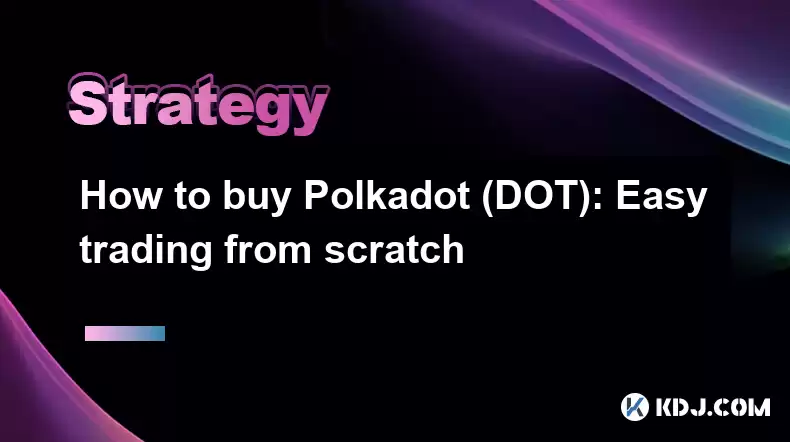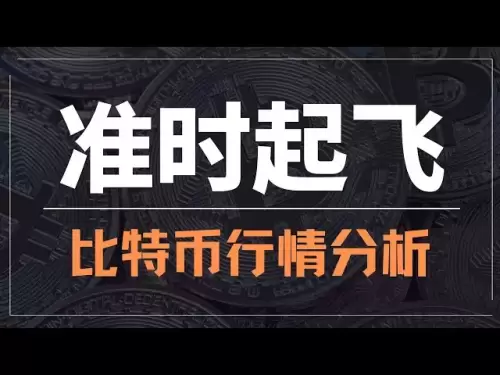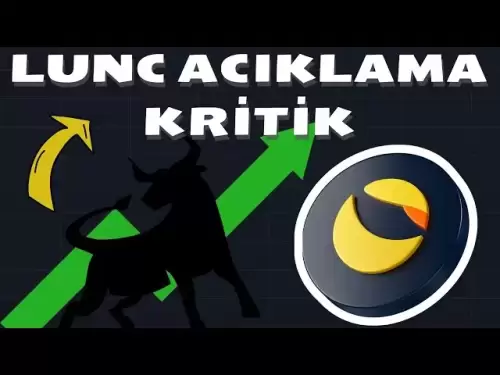-
 Bitcoin
Bitcoin $117400
1.88% -
 Ethereum
Ethereum $3867
5.29% -
 XRP
XRP $3.081
2.58% -
 Tether USDt
Tether USDt $1.000
0.03% -
 BNB
BNB $779.7
0.92% -
 Solana
Solana $171.8
2.11% -
 USDC
USDC $0.9999
0.01% -
 Dogecoin
Dogecoin $0.2172
5.80% -
 TRON
TRON $0.3413
1.41% -
 Cardano
Cardano $0.7641
3.06% -
 Hyperliquid
Hyperliquid $39.69
3.62% -
 Sui
Sui $3.731
6.73% -
 Stellar
Stellar $0.4125
3.55% -
 Chainlink
Chainlink $18.23
8.86% -
 Bitcoin Cash
Bitcoin Cash $579.5
1.41% -
 Hedera
Hedera $0.2538
4.02% -
 Ethena USDe
Ethena USDe $1.001
0.00% -
 Avalanche
Avalanche $22.81
2.82% -
 Litecoin
Litecoin $121.7
1.10% -
 UNUS SED LEO
UNUS SED LEO $8.962
-0.33% -
 Toncoin
Toncoin $3.324
2.94% -
 Shiba Inu
Shiba Inu $0.00001263
2.30% -
 Uniswap
Uniswap $10.24
4.95% -
 Polkadot
Polkadot $3.780
3.09% -
 Dai
Dai $1.000
0.03% -
 Bitget Token
Bitget Token $4.432
1.64% -
 Cronos
Cronos $0.1493
3.87% -
 Monero
Monero $256.7
-9.05% -
 Pepe
Pepe $0.00001092
3.99% -
 Aave
Aave $279.0
6.11%
How to buy Polkadot (DOT): Easy trading from scratch
To buy Polkadot (DOT), choose a reputable exchange like Binance or Kraken, fund your account, place a market or limit order, and secure your DOT in a personal wallet.
Apr 10, 2025 at 04:42 pm

Buying Polkadot (DOT) can be a straightforward process if you know the right steps to follow. Whether you are a beginner or an experienced trader, understanding how to purchase DOT from scratch is essential. This guide will walk you through the entire process, from setting up your wallet to completing your first trade. By the end, you'll be equipped with the knowledge to confidently buy Polkadot and start your journey in the world of cryptocurrencies.
Choosing the Right Exchange
The first step in buying Polkadot (DOT) is to select a reputable cryptocurrency exchange that supports DOT trading. Some popular exchanges that list Polkadot include Binance, Kraken, and Coinbase. It's important to choose an exchange that not only supports DOT but also offers a user-friendly interface and strong security measures.
- Visit the website of the chosen exchange.
- Sign up for an account by providing your email address and creating a strong password.
- Complete the verification process, which typically involves submitting identification documents to comply with KYC (Know Your Customer) regulations.
Once your account is set up and verified, you can proceed to the next step.
Funding Your Account
Before you can buy Polkadot, you need to deposit funds into your exchange account. Most exchanges support deposits in various forms, including fiat currencies like USD or EUR, and cryptocurrencies like Bitcoin (BTC) or Ethereum (ETH).
- Navigate to the deposit section of the exchange.
- Choose your preferred deposit method. If you're using a bank transfer, you'll need to provide your bank details and initiate the transfer. If you're using cryptocurrency, you'll need to send the funds to the wallet address provided by the exchange.
- Wait for the funds to arrive in your exchange account. This can take anywhere from a few minutes to several days, depending on the method used.
Placing Your Order
With funds in your account, you're ready to buy Polkadot. Exchanges typically offer two types of orders: market orders and limit orders.
- Market orders are executed immediately at the current market price. This is the simplest way to buy DOT if you want to get it quickly.
- Limit orders allow you to set a specific price at which you want to buy DOT. The order will only be executed if the market reaches your specified price.
To place an order:
- Go to the trading section of the exchange.
- Select the DOT trading pair you want to use (e.g., DOT/USD, DOT/BTC).
- Enter the amount of DOT you want to buy and choose the type of order (market or limit).
- Review your order details and confirm the purchase.
Securing Your Polkadot
After purchasing Polkadot, it's crucial to move your DOT to a secure wallet. Keeping your cryptocurrencies on an exchange can be risky due to potential hacks and security breaches. There are several types of wallets you can use to store DOT, including hardware wallets, software wallets, and mobile wallets.
- Hardware wallets like Ledger and Trezor offer the highest level of security by storing your private keys offline.
- Software wallets like Polkadot.js and Trust Wallet are convenient for everyday use but may be less secure than hardware wallets.
- Mobile wallets like Fearless Wallet provide a user-friendly interface and are suitable for managing your DOT on the go.
To transfer your DOT to a wallet:
- Set up your chosen wallet according to the provider's instructions.
- Generate a new wallet address within the wallet.
- Return to the exchange and navigate to the withdrawal section.
- Enter the wallet address you generated and specify the amount of DOT you want to withdraw.
- Confirm the withdrawal and wait for the transaction to be processed.
Monitoring Your Investment
Once you've bought and secured your Polkadot, it's important to keep an eye on your investment. The cryptocurrency market can be volatile, and staying informed about market trends and news related to Polkadot can help you make better decisions.
- Use trading platforms and apps that provide real-time price updates and market analysis.
- Join online communities and forums dedicated to Polkadot to stay updated on the latest developments and discussions.
- Set up price alerts to notify you when DOT reaches certain price levels, helping you decide when to buy more or sell.
Frequently Asked Questions
Q: Can I buy Polkadot with a credit card?
A: Yes, some exchanges like Binance and Coinbase allow you to buy Polkadot directly with a credit card. However, be aware that using a credit card may incur higher fees compared to other payment methods.
Q: What is the minimum amount of DOT I can buy?
A: The minimum amount of DOT you can buy depends on the exchange and the trading pair you use. Some exchanges may have a minimum order size, while others may allow you to buy fractional amounts of DOT.
Q: How long does it take to buy Polkadot?
A: The time it takes to buy Polkadot can vary. If you're using a market order, the purchase can be completed almost instantly. However, if you're using a bank transfer to fund your account, it may take several days for the funds to arrive and for you to complete the purchase.
Q: Is it safe to store Polkadot on an exchange?
A: While exchanges have security measures in place, it's generally safer to store your Polkadot in a personal wallet, especially for long-term holding. Exchanges can be vulnerable to hacks, and keeping your cryptocurrencies in your own wallet gives you full control over your private keys.
Disclaimer:info@kdj.com
The information provided is not trading advice. kdj.com does not assume any responsibility for any investments made based on the information provided in this article. Cryptocurrencies are highly volatile and it is highly recommended that you invest with caution after thorough research!
If you believe that the content used on this website infringes your copyright, please contact us immediately (info@kdj.com) and we will delete it promptly.
- Pi Coin's dApp and AI Potential: Building a Decentralized Future
- 2025-08-08 02:30:12
- Ruvi AI Takes the Lead: Outshining Dogecoin on CoinMarketCap
- 2025-08-08 02:50:12
- Cryptos Under $1: Is Ripple Still the King?
- 2025-08-08 03:50:12
- Cold Wallet, Bonk Price, ICP Price: Navigating the Crypto Landscape in 2025
- 2025-08-08 03:56:12
- Memecoins, Low-Cap Gems, and the Hunt for 10,000x Gains: What's Next?
- 2025-08-08 02:50:12
- Bitcoin, Greenidge, and Liquidity: Navigating the Crypto Currents in NYC
- 2025-08-08 02:30:12
Related knowledge

How to avoid common crypto investment mistakes?
Jul 13,2025 at 01:35am
Understanding the Risks of Crypto InvestmentInvesting in cryptocurrency can be highly rewarding, but it also comes with significant risks. One of the ...

What is a long-short crypto strategy?
Jul 15,2025 at 10:56am
Understanding the Basics of a Long-Short Crypto StrategyA long-short crypto strategy is an investment approach where traders simultaneously take long ...

What is a long-short crypto strategy?
Jul 11,2025 at 01:28pm
Understanding the Basics of Long-Short Crypto StrategyA long-short crypto strategy is an investment approach where traders take both long and short po...

How to use the RSI indicator for crypto?
Jul 12,2025 at 03:56pm
Understanding the RSI Indicator in Cryptocurrency TradingThe Relative Strength Index (RSI) is a momentum oscillator used to measure the speed and chan...

Is copy trading a good strategy for crypto beginners?
Jul 12,2025 at 08:28am
Understanding Copy Trading in the Cryptocurrency MarketCopy trading is a strategy where novice traders replicate the trades of experienced investors a...

How to build a crypto portfolio with $1000?
Jul 13,2025 at 08:14pm
Understanding the Basics of Cryptocurrency InvestmentBuilding a crypto portfolio with $1000 starts with understanding the fundamentals of cryptocurren...

How to avoid common crypto investment mistakes?
Jul 13,2025 at 01:35am
Understanding the Risks of Crypto InvestmentInvesting in cryptocurrency can be highly rewarding, but it also comes with significant risks. One of the ...

What is a long-short crypto strategy?
Jul 15,2025 at 10:56am
Understanding the Basics of a Long-Short Crypto StrategyA long-short crypto strategy is an investment approach where traders simultaneously take long ...

What is a long-short crypto strategy?
Jul 11,2025 at 01:28pm
Understanding the Basics of Long-Short Crypto StrategyA long-short crypto strategy is an investment approach where traders take both long and short po...

How to use the RSI indicator for crypto?
Jul 12,2025 at 03:56pm
Understanding the RSI Indicator in Cryptocurrency TradingThe Relative Strength Index (RSI) is a momentum oscillator used to measure the speed and chan...

Is copy trading a good strategy for crypto beginners?
Jul 12,2025 at 08:28am
Understanding Copy Trading in the Cryptocurrency MarketCopy trading is a strategy where novice traders replicate the trades of experienced investors a...

How to build a crypto portfolio with $1000?
Jul 13,2025 at 08:14pm
Understanding the Basics of Cryptocurrency InvestmentBuilding a crypto portfolio with $1000 starts with understanding the fundamentals of cryptocurren...
See all articles

























































































